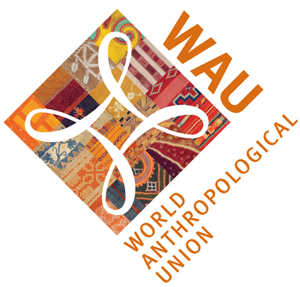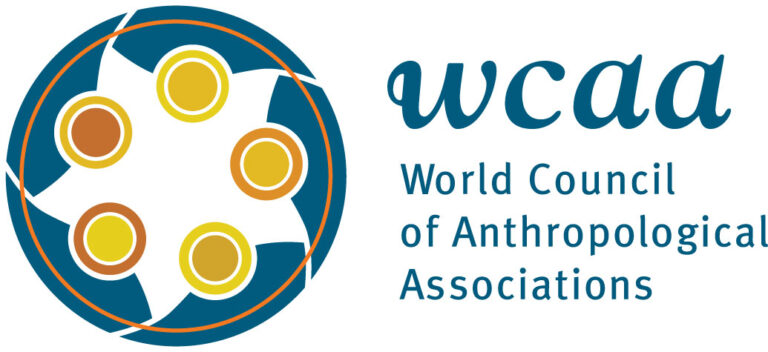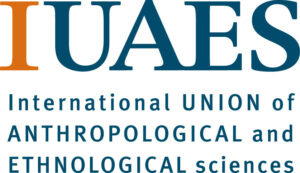
Hendriks, Thomas. 2017. “A darker shade of white: expat self-making in a Congolese rainforest enclave.” Africa 87(4): 683-701.
This article offers a new perspective on contemporary ‘whiteness’ in Africa by looking at the ambiguous ways in which it affects everyday life in and around the labour compounds of a multinational timber firm in the Congolese rainforest. As a foreign investment enclave, the logging concession is home to a small isolated community of European expatriate men whose ‘white’ faces evoke a set of ambivalent memories of colonial exploitation in the area. Through a carefully contextualized understanding of how these contemporary expats are perceived in the labour compounds and how they construct their own racialized male selves, this article pushes the discussion on whiteness in Africa beyond the conventional analysis of (post-)settler identities and whites of African nationalities. It argues that, as a permanent fixture in the present neoliberal moment but also as an uncanny repetition of a colonial past, the European loggers construct and embody very specific ‘expat’ masculinities whose internalized dynamics of self-exoticization make them ‘African’ in their own right. Mobilizing the problematic trope of ‘darkness’, both in expat self-making practices and in popular narratives about their presence, this article illustrates how whiteness in Africa comes in many shades.
Cet article offre une nouvelle perspective sur la « blanchité » en Afrique contemporaine, en investiguant comment elle affecte la vie quotidienne dans et autour des camps de travailleurs d’une entreprise forestière multinationale en forêt Congolaise. En tant qu’enclave d’investissements étrangers, cette concession forestière, gérée par des hommes « blancs » vivant dans une petite communauté isolée, fait ressurgir des mémoires populaires ambivalentes touchant à l’exploitation coloniale de la région. A travers une lecture contextualisée de la façon dont les travailleurs perçoivent ces expatriés Européens et de la façon dont ces derniers construisent leurs propres identités raciales masculines, cet article pousse la discussion sur la « blanchité » en Afrique au-delà de l’analyse conventionnelle des identités (post-)settler et des Blancs de nationalités africaines. Comme caractéristique du présent néolibéral, mais aussi comme répétition troublante du passé colonial, les forestiers Européens construisent et incorporent des masculinités expatriées particulières qui « s’africanisent » à travers des dynamiques d’auto-exotisation. En mobilisant la métaphore problématique des « ténèbres » dans les pratiques de construction de soi chez les expatriés, mais aussi dans les narratifs populaires sur leur présence, cet article montre comment la blanchité en Afrique présente de multiples nuances.
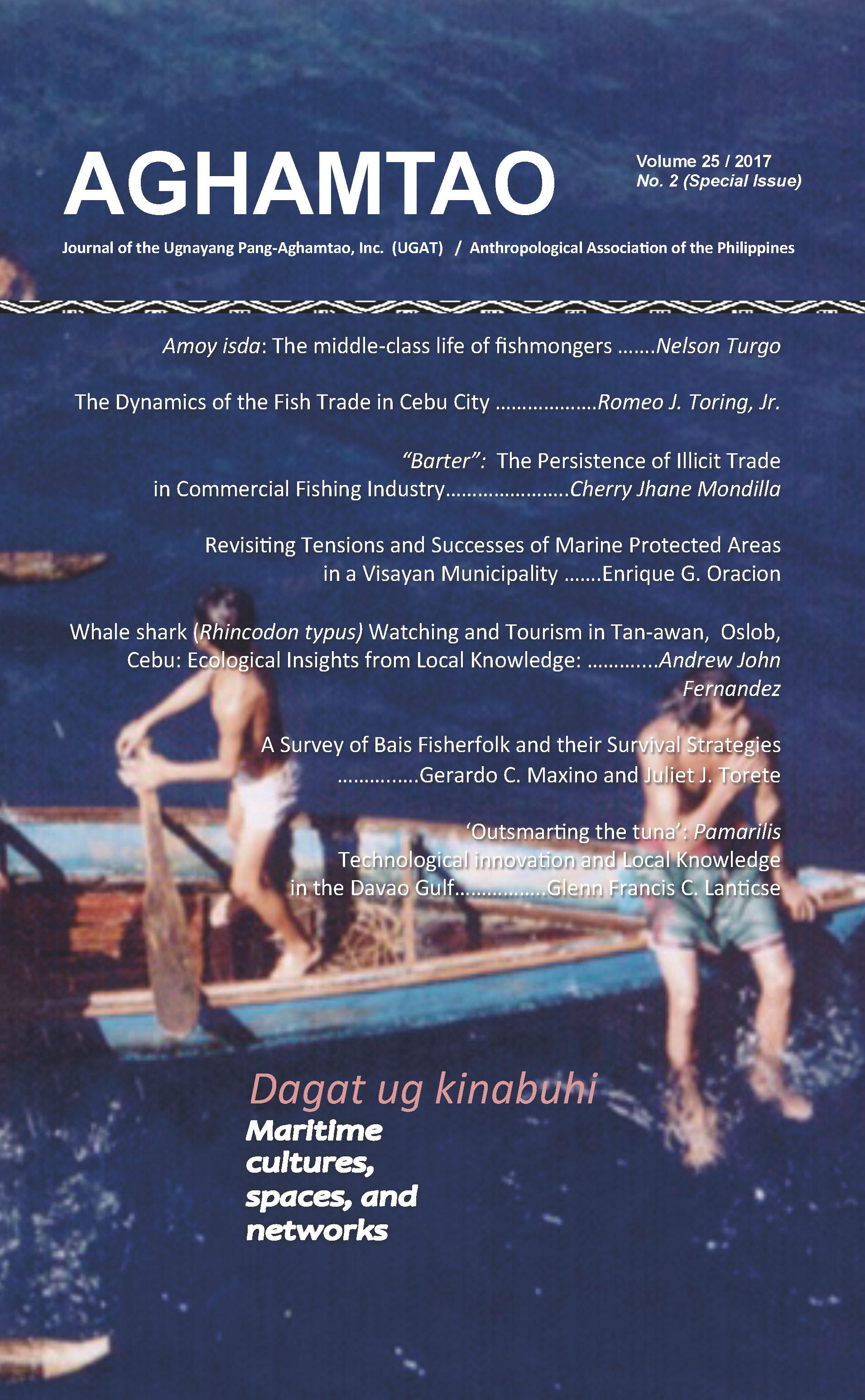
Turgo, Nelson. 2017. “‘Amoy Isda’: The ‘Middle-class’ Life of Market Fishmongers.” Aghamtao 25(2): 201-229.
Fishing communities, especially in developing economies, are, most often than not, economically, socially, and spatially positioned in the fringes of society. People whose lives revolve around fishing and its ancillaries are looked down upon because they are perceived as dirty, uncouth, and unlettered and the very opposite of ‘being modern’. This is so in the case of a fishing community to be discussed here, though there is a group of people in the fishing community who in some interesting ways resist this broad denigrating socio-cultural description. They do not see themselves as part of the socio-spatial ‘other’. Some market fishmongers, by virtue of their good income in relation to the rest of the community, live, in their own reckoning, a modern life: they have relatively big concrete houses with modern amenities and do as most middle-class living in the town center would also do. But their ‘modern life,’ as it were, is fraught with contradictions and tensions. Firstly, they maintain residence in the fishing community, and secondly, to sustain their middle-class lifestyle, market fishmongers make a living through fish trading that traps them in a life of perceived servitude or ‘backwardness’. Their enjoyment then of modernity is achieved at the cost of embedding themselves further in an economic activity and in a place perceived by many to be the very opposite of what modern life stands for.
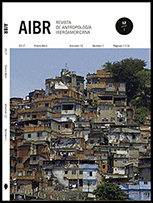
Ruiz, Gabriel. 2017. “Tres veces en la plaza: Escenificación de una ceremonia estatal de perdón público por actos de violencia paramilitar en Colombia (Three times at the square: staging of a ceremony of State public apology due to the acts of paramilitary violence in Colombia).” AIBR, Revista de Antropología Iberoamericana 12(1): 9-29.
The acts of armed violence can pour a new sense over the spaces where a community build its social identity. In Nueva Venecia, a small pile-dwelling village in Magdalena (Colombia), three different armed actors (the guerrilla, the right-wing paramilitaries and the Public Force) gathered the local people, at three different times, on the same social space: the main square. In the first meeting, people was warned, by the first one of the three groups, about the possibility of a slaughter that could happen there. In the second occasion, local people was both victim and witness of the way that the second one carried it on. In the third meeting, the third group offered excuses for what happened. The paper analyses the way in which these three acts determined three marks of the continuum of violence over the local nodal space of memory. The article is organized around the last act, when national Army and Police representatives organized a public ceremony of forgiveness because of the paramilitary massacre. The study of such a ceremony shows it as a stage where agents of confronting memories are trying to achieve social legitimacy rather than a true act of symbolic reparation.
Los actos de violencia armada tienen la capacidad de resignificar los espacios alrededor de los cuales una comunidad ha construido su identidad social. En el pequeño poblado palafito de Nueva Venecia (Magdalena-Colombia), tres distintos actores armados (la guerrilla, los paramilitares de extrema derecha y la fuerza pública colombiana) convocaron a la población, en tres distintos momentos, en el mismo espacio social: la plaza principal del pueblo. En la primera reunión, el primer grupo advirtió sobre la posibilidad de una masacre; en la segunda, los pobladores fueron víctimas y testigos de la forma en que el segundo grupo la ejecutaba; y en la tercera reunión, el tercer grupo ofrecía excusas por lo sucedido. El artículo analiza la forma en que estos tres actos determinaron tres marcas del continuum de la violencia sobre ese espacio nodal de memoria. El texto está organizado narrativamente alrededor del último de estos actos, cuando representantes del ejército y la policía colombianas ofician una ceremonia pública de perdón por la masacre paramilitar. El análisis de dicha ceremonia la revela más como un escenario donde los agentes de memorias enfrentadas despliegan dispositivos discursivos para legitimarse socialmente como un verdadero acto de reparación simbólica.
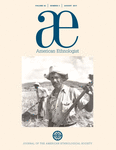
Gusterson, Hugh. 2017. “Homework: Toward a critical ethnography of the university.” American Ethnologist 44(3): 435-450.
Anthropologists have not systematically studied universities, and ethnographies of the university focus too much on student life. The literature on the Cold War university, broadly concerned with the relationship between power and knowledge, could serve as a model for a critical anthropology of the neoliberal university. Such an anthropology would investigate various important issues—including the changing character of public and private universities, the rise of casual labor and corporate employment practices on campus, the student-debt crisis, the university’s role in increasing socioeconomic inequality and class immobility, and the relationship that such disciplines as economics and political science maintain with the state and capital.
Los antrop´ologos no han estudiado la universidad sistem´aticamente, y las etnograf´ıas de la universidad se enfocan demasiado en la vida estudiantil. La literatura sobre la universidad durante la Guerra Fr´ıa, generalmente centrada en la relaci´on entre el poder y el conocimiento, puede servir de modelo para una antropolog´ıa cr´ıtica de la universidad neoliberal. Tal antropolog´ıa investigar´ıa diferentes temas importantes —incluyendo la transformaci´on de las universidades p´ublicas y privadas, el aumento del trabajo temporal y de las pr´acticas corporativas de empleo en el campus universitario, la crisis de endeudamiento estudiantil, el rol de la universidad en el agravamiento de la desigualdad social y econ´omica y la relaci´on que mantienen disciplinas como la econom´ıa y la ciencia pol´ıtica con el estado y el capital—.

Novak, Shannon. 2017. “Corporeal Congregations and Asynchronous Lives: Unpacking the Pews at Spring Street.” American Anthropologist 119(2): 236-252.
This article seeks to expose the “fallacies of synchrony” that often accompany the analysis of human remains. In approaching a cemetery, for example, we all too easily think of the bodies there as a “community,” even when they belong to different generations or geographic contexts. This simple point has major implications, especially for the bioarchaeology of urban landscapes. Here, chronologically disparate elements accumulate in vast me´ langes, offering innumerable examples of the “non-contemporaneity of the contemporaneous,” an idea developed by Karl Mannheim ([1928] 1952) and Alfred Schutz (1967), and now extended to archaeology by Gavin Lucas (2015). To escape the fallacies of synchrony and explore the shifting rhythms of city life, I turn to the case of the Spring Street Presbyterian Church in Manhattan. When the church burial vaults (ca. 1820–1850) were unexpectedly unearthed in 2006, they seemed to represent a ready-made “congregation.” Yet Spring Street was actually a “catchment zone” of mingled and mangled temporalities. Though placed together in death, the bodies there had only occasionally crossed paths in life. By following some of their traces to and from the site, we may come to understand what it means to gather, work, and worship together in a society of strangers.
Este art´ıculo busca exponer las “falacias de la sincron´ıa” que a menudo acompan˜ an el ana´ lisis de los restos humanos. Cuando nos acercamos a un cementerio, por ejemplo, todos fa´ cilmente pensamos de los cuerpos all´ı como una “comunidad,” aun cuando pertenecen a diferentes generaciones o contextos geogra´ ficos. Este simple punto tiene mayores implicaciones, especialmente para la bioarqueolog´ıa de los paisajes urbanos. Aqu´ı, elementos cronolo´ gicamente dispares se acumulan en vastas mezclas, ofreciendo innumerables ejemplos de la “nocontemporaneidad de lo contempora´ neo”, una idea desarrollada por Karl Mannheim ([1928] 1952) y Alfred Schutz (1967), y ahora extendida a la arqueolog´ıa por Gavin Lucas (2015). Para escapar de las falacias de la sincron´ıa y explorar los ritmos cambiantes de la vida de la ciudad, vuelvo al caso de la Iglesia Presbiteriana de Spring Street en Manhattan. Cuando las bo´ vedas de entierro de la iglesia (ca. 1820–1850) fueron desenterradas inesperadamente en 2006, parecieron representar una “congregacio´ n” previamente formada. Todav´ıa Spring Street era en realidad una “zona de captacio´ n” de temporalidades mezcladas y mutiladas. Aunque colocados juntos en muerte, los cuerpos all´ı so´ lo ocasionalmente hab´ıan cruzado caminos en vida. Siguiendo algunas de sus huellas desde y hacia el sitio, podemos llegar a entender que´ significa reunir, trabajar, y rezar juntos en una sociedad de extran˜ os.

Heller, Monica, Sari Pietika¨inen and Emanuel da Silva. 2017. “Body, Nature, Language: Artisans to Artists in the Commodification of Authenticity.” Anthropologica 59(1): 114-129.
This article examines processes of authenticating and selling handicrafts at the conjuncture of cultural pride and economic profit in two peripheral sites (Finnish Sa´miland and rural Que´bec), under shared conditions of late capitalism and globalising political economies. These conditions (re)structure traditionalist and modernist discourses about artisans’ historical bodies, their connections to the local land (nature), and how they interactionally authenticate and sell their products through language. Under these conditions, the commodification of authenticity pushes artisans and handicrafts beyond being emblems of national belonging and collective tradition, and toward individualised, artistic commercial production with greater or lesser ties to post-national cosmopolitanism.
Cet article examine les processus d’authentification et de vente l’artisanat a` la croise´e de la fierte´ culturelle et du profit e´conomique dans deux sites pe´riphe´riques (en Laponie finlandaise et au Que´bec rural), sous les conditions communes du capitalisme tardif et des politiques e´conomiques mondialise´es. Ces conditions (re)structurent les discours traditionalistes et modernisants sur les corps historise´s des artisans, leurs liens avec la terre locale (la nature), et modifient la manie`re don’t ils authentifient et vendent leurs produits de fac¸on interactionnelle a` travers la langue. Dans ces conditions, la commodification de l’authenticite´ pousse les artisans et l’artisanat au-dela` d’emble`mes d’appartenance nationale et de tradition collective, vers la production artistique individualise´e et commerciale, avec des liens plus ou moins importants au du cosmopolitisme post-national.

Venbrux, Eric. 2017. “How the Tiwi Construct the Deceased’s Postself in Mortuary Ritual.” Anthropological Forum 27(1): 49-62.
In this paper I will discuss Tiwi mortuary rites as a transformative, relational process in which the deceased’s postself is created. The deceased’s self is fashioned and manifested after death through a series of ritual practices performed by specific relatives. This approach allows me not only to stress the concern Tiwi people show about being remembered after death but also how this concern defines each participant’s ceremonial role and constitutes one of the mortuary ritual’s major aims. The deceased will be remembered as portrayed in the final rites.

Singleton, Michael. 2017. “The Bombardier Marabout of Dakar–An African Shaman? Towards a Nominalist Anthropology.” Anthropos 112: 499-516.
Academic interpretations of shamanism in the West have oscillated between the sociological and the cultural. Anchored in an anecdotal case study of a Senegalese marabout, a less equivocally ethnocentric approach is here proposed in terms of cultures as Projects (or Wholes) which, on account of their irreducibly particular projects (or peculiar parts), appear sometimes marginally convergent but (on the whole) are often radically divergent. A nominalist onto-epistemology could thus suit the anthropological cause more than any other.

García Manso, Almudena and Artenira Silva E Silva. 2017. “CIBERFEMINISMO O FEMINISMO EN LA RED: Haciendo arqueología en Internet (CYBERFEMINISM OR FEMINISM IN THE WEB: doing archeology on the Internet).” Antropología Experimental 17: 277-286.
This text aims to review most characteristic aspects of Cyberfeminism, with emphasis on three marginal observations that are outside the limits of feminist theory: the Cyberfeminist reality as a subversive strategy to destabilize the dual gender rule; the need to maintain the unity and the uniqueness of Cyberfeminism and feminisms, and support in ICT “Join me and together we will rule the galaxy...”; and the force in the cyborg ontology as a strategy, policy and mythical image of destabilization of the “standardized” genders. We speak of archeology, which is all the information on the Internet. We are open to collect clues and to deduce from the antiquity of these data the cyberfeminist ideology since its inception. Not isnt too times for analog generations, but is more time for millenians. In this work metaphorically we named archeology as a research technique of a very ancient fact. Although in truth what we want to analyse what was cyberfeminism, understood as feminism for the internet and not feminism on the internet.
Este texto pretende repasar los aspectos más característicos del ciberfeminismo, hacienda especial hincapié en tres reflexiones marginales que están fuera de los límites de las teorías feministas: la realidad ciberfeminista como estrategia subversiva desestabilizadora de la norma de género dual; la necesidad de unión y mantenimiento de la singularidad de los ciberfeminismos y feminismos, y el apoyo en las TICs “juntas gobernaremos la galaxia…”; y la fuerza en la ontología cyborg como estrategia, imagen mítica y política de desestabilización de los géneros “duales y estandarizados”. Hablamos de arqueología, pues nos adentramos en una sima, que es toda la información en Internet, nos mostramos abiertos a recoger pistas y a deducir desde la antigüedad de esos datos, la ideología ciberfeminista desde sus orígenes. Tiempos no muy lejanos para las generaciones analógicas, pero tiempos antiguos para las generaciones “millenians”. En este trabajo nombramos metafóricamente a la arqueológica como técnica de investigación de un hecho muy antiguo. Aunque en verdad lo que queremos hacer es un recorrido por lo fue el ciberfeminismo, entendido como feminismo para internet y no feminismo en internet.

Zuppi, Andrea. 2017. “Naturalism and the representation of animals in the Southern French Pyrenees.” ANUAC 6(2): 129-154.
Models of “Western ontology” often depict the Euro-American world in a stereotypical way that does not seem to have much to do with empirical reality. The aim of this article is to assess the ethnographic soundness of one of these models: naturalism (Descola 2013). In Beyond nature and culture, Philippe Descola makes the hypothesis that Westerners are “naturalists”, namely, that they trace an unbridgeable gap between the domain of culture, to which they belong, and the “mute and impersonal” domain of nature. Thus, for alleged naturalists, animals are nothing but machines, devoid of all the inner qualities typical of the human being. In this paper, I will analyze the relation between naturalism and ethnographic data collected in Semot, a small village in the southern French Pyrenees. Through a focus on human-animal relations in the contexts of hunting and herding, it will be shown how naturalism proves to be a rather inadequate model to account for the ways animals are represented in Semot.
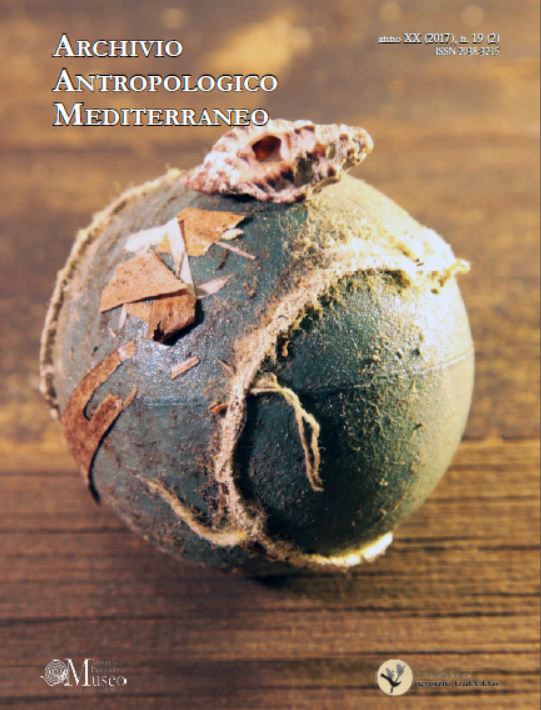
Bougleux, Elena. 2017. “A River that Divides. Climate Change Perspectives and Historical Accounts in Southern India.” Archivio Antropologico Mediterraneo 19(2): 13-26.

Kuwayama, Takami. 2017. “Japanese anthropology, neoliberal knowledge structuring, and the rise of audit culture: lessons from the academic world system.” Asian Anthropology 16(3): 159-171.
Placing my earlier arguments about the marginality of Japanese anthropology in the world in both historical and comparative perspectives, this article examines the influence of two important recent developments on the status of Japanese and, more broadly, East Asian scholarship – the impact of neoliberalism on, and the spread of audit culture within, higher education. Special attention is paid to the increasing importance attached to world university rankings in status-conscious East Asian countries, in which researchers are being urged to publish in internationally recognized English-language journals. These changes have, on the one hand, prompted Japanese and other East Asian scholars to achieve higher goals, thus helping raise their relative status in the wider world, while forcing them, on the other hand, to thoroughly reconsider the traditional structure of knowledge in their national or regional community. The current situation of East Asian scholarship therefore presents both opportunities and crises. How to meet this challenge is the central question addressed in this article.
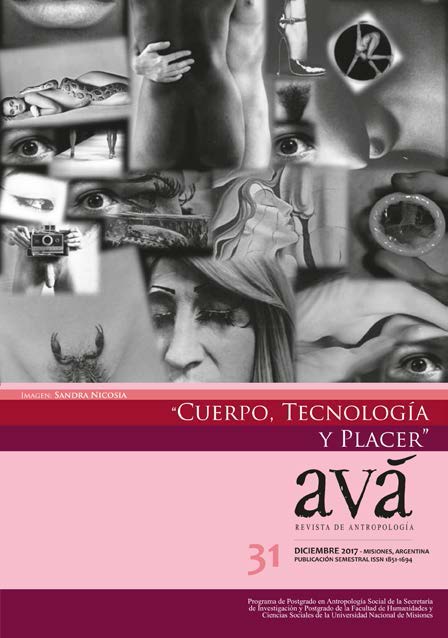
de Souza Barreto, Victor Hugo. 2017. “RISCO, PRAZER E CUIDADO: TECNICAS DE SI NOS LIMITES DA SEXUALIDADE.” AVÁ 31: 119-142.
One of the proposals of this text is to point out how care is one of the central elements present both in the discourse and in the actions observed between my interlocutors, adherents of sexual practices considered as “at risk”. I take as the object of analysis the sexual practices framed as behaviors for the prevention of diseases, the care of oneself and the evaluation of the “risks” –or the absence/ lack of them– like social and subjective experiences, seeking to investigate the relations between pleasure and risk existing on the “sex scripts” present among men who frequent commercial spaces or organize sex-related events among them.
Uma das propostas desse texto é a de apontar como o cuidado é um dos elementos centrais presentes tanto no discurso quanto nas ações observadas entre meus interlocutores, adeptos de práticas sexuais tidas como “de risco”. Tomo como objeto de análise as práticas sexuais enquadradas como comportamentos para a prevenção de doenças, o cuidado de si e a avaliação dos “riscos” –ou a ausência/falta delas– como experiências sociais e subjetivas, buscando investigar as relações entre prazer e risco existentes nos “roteiros sexuais” presentes entre homens que frequentam espaços comerciais ou organizam eventos voltados ao sexo entre eles.
In 1972, the Gonzalo Rincón Gutiérrez Archaeological Museum officially began its activities, it was inaugurated with a successful exhibition which had the name of The Beginning and the End, in which they combined past and present. Since then, there have been several exhibitions, conferences and publications, which include the contributions of the most distinguished specialists in Venezuelan from Archeology, who have contributed to enrich the Museum’s copious heritage with their thoughts and works: “tending to exalt the existence of our people to induce them to study their history, putting into practice their inspiration and their knowledge necessary to create scientific knowledge. So people have to be aware that their identity is never forgotten, it means it will be in the memory and in their actions. From this exhibition “prince”, the Museum initiates a museographic and pedagogical process that integrates the achievements obtained with the achievements of our ancestors, in order to develop and to promote national self-confidence, as well as creativity and independence by considering itself from the deep perspective of the centuries. In this sense, the Museum performs different activities, having as fundamental aims: collecting, preserving, studying, exhibiting and disseminating in a clear and systematic way, the testimony and knowledge that illustrate the indigenous past and the conformation of Venezuela as a nation.
En 1972, oficialmente el Museo Arqueológico Gonzalo Rincón Gutiérrez inicia sus actividades, inaugurado con una exitosa exposición bajo el nombre de Principio y Fin, en la cual combinaban pasado y presente. Desde entonces, varias han sido las exposiciones, conferencias y publicaciones realizadas, en donde figuran las contribuciones de los más destacados especialistas de la Arqueología Venezolana, quienes han contribuido a enriquecer con su pensamiento y trabajo al copioso patrimonio que atesora el Museo: “tendiendo a enaltecer la existencia de nuestro pueblo para inducirlo a estudiar su Historia, llevando a la práctica su inspiración y su saber para crear científica artísticamente, siempre consciente de que la identidad de los pueblos está forjada por la memoria de sus actos.” Desde esta exposición príncipe, el Museo inicia un proceso museográfico y pedagógico que integra los logros alcanzados los logros de nuestros ancestros, para así desarrollar y fomentar la autoconfianza nacional, promoviendo la creatividad e independencia al considerarse a sí mismo desde la perspectiva profunda de los siglos. En este sentido, el Museo desempeña variadas actividades, teniendo como ejes fundamentales: colectar, preservar, estudiar, exhibir y difundir de manera clara y sistemática, los testimonio materiales y los conocimientos que ilustran el pasado indígena y la conformación de Venezuela como nación.
En 1972, officiellement, le Musée Archéologique Gonzalo Rincón Gutiérrez initie ses activités par Commencement et Fin, une exposition qui connut un grand succès. Depuis lors, nombre d’expositions, conférences et publications des plus importants spécialistes qui « tendent à louer notre peuple pour l’amener à étudier son Histoire, apportant à la pratique son inspiration et son savoir pour créer une science artistique, consciente de ce que l’identité du peuple est forgée par la mémoire de ses actes. » Depuis cette première exposition, le Musée intègre les réussites de nos ancêtres pour nourrir et développer la confiance nationale. En ce sens, ses axes fondamentaux sont: collecter, préserver, étudier et diffuser les témoignages qui illustrent le passé indigène et la conformation du Venezuela comme nation.
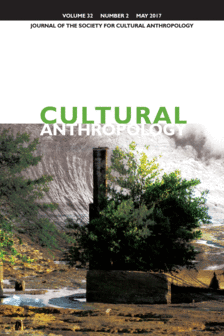
Vaughn, Sarah E. 2017. “DISAPPEARING MANGROVES: The Epistemic Politics of Climate Adaptation in Guyana.” Cultural Anthropology 32(2): 242-268.
This article details the epistemic politics that shape the climate adaptation of sea defense in Guyana. Rethinking the material arrangements of expertise in the Anthropocene, I track the work of a group of technoscientific experts participating in the Guyana Mangrove Restoration Project (GMRP). In an attempt to redesign sea defense around mangrove ecosystems, GMRP participants recognize that climate adaptation is not solely dependent on their well-intentioned efforts. As research objects, mangroves are not only forms of evidence but also tools that guide expert action and distinctions in day-to-day labor. Moreover, mangroves draw out the explicit contingencies of modeling, placing expert groups in tension with one another as each seeks to advance their own ideas for mangrove protection, management, or change. I show that this relational ontology is emblematic of climate-adaptation policy’s broader operative logics, or what I call inverse performativity. This is a process whereby an unruly world forces one expert group to seek help from others, building a new ecology of expertise to adapt to a changing climate. Impermanent and wondrous, mangroves urge us to think more creatively about vulnerability to climate change and the kinds of practices that inspire knowledge about it.
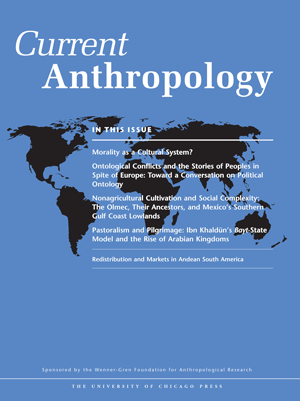
Fassin, Didier, Matthew Wilhelm-Solomon, and Aurelia Segatti. 2017. “Asylum as a Form of Life: The Politics and Experience of Indeterminacy in South Africa.” Current Anthropology 58(2): 160-187.
According to the United Nations, in 2003 South Africa had the highest number of asylum seekers worldwide. This situation resulted from the combination of two factors: considerable migration flows from neighboring African countries and ineffective assessment procedures by the South African administration. Based on interviews with applicants or former applicants to refugee status as well as officials, adjudicators, and activists, our research focuses on the experience of existential indeterminacy endured by claimants and the signification of the ambivalent policies implemented by the state. We propose to analyze asylum as a form of life, rather than as bare life, not disambiguating the two meanings in tension in Wittgenstein’s reflections: a particular shared world and a universal human condition. We emphasize how this form of life is shaped by the law, according to Agamben’s analysis, although in an equivocal way, as individuals alternatively adapt to it or resist it. Beyond the South African case, we argue that this form of life is a major feature of contemporary society.

Caviedes, Mauricio. 2017. “É POSSÍVEL FAZER UMA ETNOGRAFIA DAS ESCOLAS? O CASO DA FRONTEIRA AMAZÔNICA BRASIL-COLÔMBIA E DOS POVOS TICUNA E MURUI-MUINA.” Espaço Ameríndio 11(2): 14-47.
This article explains the ethnographic use of language analysis through collected data in indigenous schools during fieldwork, as part of the post-doctoral research project entitled “The education of indigenous women: identity contradictions in the schools of the Murui Muina and Ticuna people in the Amazonas River Basin, in the border between Colombia and Brasil”, within the Núcleo de Antropologia das Sociedades Indígenas e Tradicionais, PPGAS-UFRGS. The article presents interviews with indigenous school’s teachers in order to explain experiences that determine indigenous identity and its relation to gender identity, based in an ethnographical analysis of language within the context of indigenous schools. The articles suggests challenges for future research on indigenous school education in the Amazonas region. In order to understand the inequality between indigenous and “universal” forms of knowledge, the article commences by summarizing the background of language analysis in anthropology; next, it explains the relation between ethnic and gender identity and language; finally, it describes the language used by indigenous teachers in order to understand how schools shape indigenous experiences, presenting, thus, the main challenges for future research.
Neste artigo, explica-se o método de análise da linguagem a partir de dados recolhidos por meio da observação etnográfica nas escolas indígenas dentro do projeto de pesquisa de pós-doutorado “A educação da mulher indígena: contradições da identidade nas escolas indígenas Murui-Muina e Tikuna, na Amazônia da Colômbia e do Brasil”, que faz parte do Núcleo de Antropologia das Sociedades Indígenas e Tradicionais do Programa de Pós-Graduação em Antropologia Social da UFRGS. O artigo utiliza entrevistas com professores e professoras indígenas para entender, por meio da análise da linguagem, as experiências que influenciam a identidade indígena e a sua relação com a identidade de gênero no contexto do ensino escolar. Baseado nessas entrevistas, o artigo sugere desafios para futuras pesquisas sobre a educação escolar indígena na Amazônia. Com o intuito de refletir sobre a desigualdade entre conhecimentos universais e indígenas, o artigo explica primeiro os antecedentes antropológicos da análise da linguagem; a seguir, apresenta a influência da linguagem na identidade étnica e, finalmente, descreve a linguagem dos professores para entender a influência da educação escolar na experiência de ser indígena e apresenta os desafios futuros nesse campo.
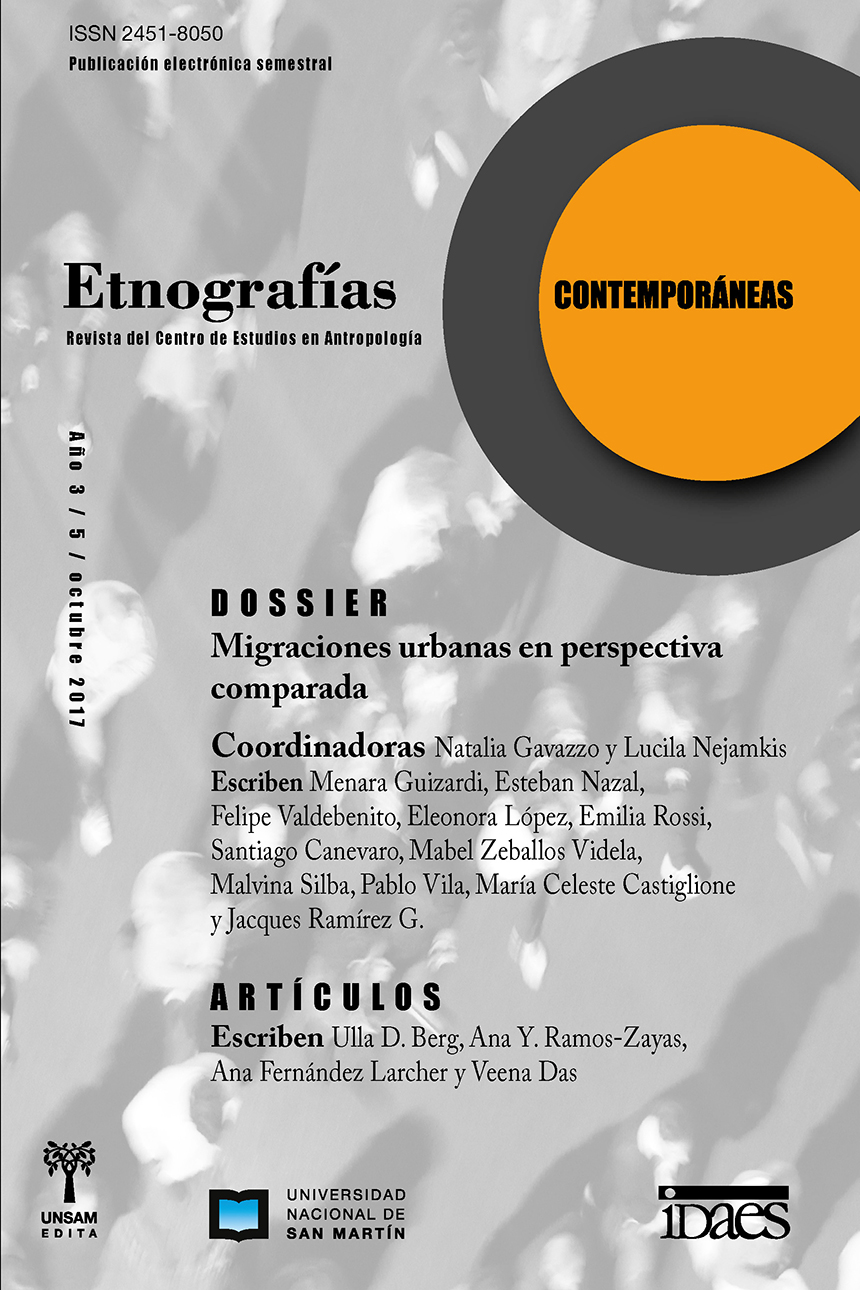
Silba, Malvina and Pablo Vila. 2017. “Músicas migrantes y la construcción de ‘lo negro’ en la Argentina contemporánea (Migrant music and the construction of “being black” in contemporary Argentina).” Etnografías Contemporáneas 3(5): 120-151.
In the present article we want to analyze the music that the migrants from Bolivia and Paraguay listen to and dance in Buenos Aires. In the context of our inquiries about cumbia, we became intrigued by the music taste of those who were identified by our own Argentine interviewees as “the blackest among blacks”: the Bolivian and Paraguayan migrants and their descendants living in Buenos Aires. These groups of migrants were their “others,” those who were below them in the social scale, and those they could stigmatize and exclude, just as other actors in their social environment did to themselves. The fieldwork was carried out between 2008 and 2009 in two dance venues (one in the City of Buenos Aires and the other in the Buenos Aires’ suburbs), which were mainly attended by members of both communities residing in Argentina. We were interested in knowing how these “blacks among blacks” worked out their identifications in relation to cumbia, young people of Bolivian and Paraguayan descent who, weekend after weekend, filled the dance floor of a pair of leisure venues intimately identified with their communities of origin.
En el presente artículo nos proponemos analizar el fenómeno de la música que escuchan y bailan los migrantes de Bolivia y Paraguay en Buenos Aires. En el contexto de nuestras indagaciones sobre la cumbia nos surgió la pregunta por lo que pasaba con la música de aquellos que eran señalados por las y los jóvenes argentinos que entrevistamos como “los más negros entre los negros”: los migrantes bolivianos y paraguayos, y sus descendientes. Estos grupos de migrantes eran sus “otros”, los que se ubicaban por debajo de ellos y a quienes podían estigmatizar y excluir, de la misma forma que otros actores de su entorno social lo hacían con ellos mismos. El trabajo de campo lo desarrollamos entre 2008 y 2009 en dos locales bailables (uno de la Ciudad de Buenos Aires y otro del Conurbano bonaerense) a los que asistían, mayoritariamente, miembros de ambas comunidades residentes en la Argentina. Nos interesaba conocer como armaban sus identificaciones en relación a la cumbia los “negros entre los negros”, quienes, fin de semana tras fin de semana, llenaban las pistas de dos locales bailables íntimamente identificados con sus comunidades de origen.

Rosa, Frederico Delgado. 2017. “Profetismos norte-ameríndios e colonialismo: um capítulo esquecido da história da antropologia? (North-Amerindian prophetisms and colonialism: a forgotten chapter in the history of anthropology?)” Etnográfica 21(2): 225-245.
James Mooney started his “multi-sited” fieldwork in different Indian reservations of the US in 1890, aiming at a clarification of a prophetic-messianic movement. His ethnography disclosed its transformations on both sides of the Rocky Mountains and in relation with the colonial context. In parallel, Mooney worked in the archive and sent queries by mail that instigated an extensive documentation on new Amerindian religions of Christian influence, directly or indirectly connected to the Ghost Dance. The institutional rise of the Boasian school obfuscated the importance of Mooney’s anthropology, which is not sufficiently acknowledged outside Americanist circuits. The article aims at divulging this figure as a methodological and intellectual forerunner of preoccupations and themes that only much later would reach the core of our discipline.
Em 1890, James Mooney iniciou um trabalho de campo “multissituado”, entre diversas reservas índias dos EUA, com vista a delimitar um movimento profético messiânico. A sua etnografia permitiu discernir as suas transformações dos dois lados das Montanhas Rochosas e em relação com o contexto colonial. Em paralelo, Mooney trabalhou em arquivo e fez questionários por correspondência que instigaram a produção de uma vasta documentação sobre novas religiões ameríndias de influência cristã, direta ou indiretamente ligadas à Dança dos Espíritos (Ghost Dance). Devido à ascensão institucional da escola boasiana, ficou em grande parte esquecida e não é ainda hoje devidamente reconhecida, fora dos meios americanistas, a importância da antropologia de Mooney, enquanto precursor metodológico e intelectual de preocupações que só muito depois do seu tempo se tornariam capitais para a disciplina.
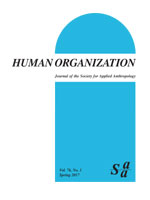
Padgett, Deborah K. and Prachi Priyam. 2017. “Pavement Dwelling in Delhi, India: An Ethnographic Account of Survival on the Margins.” Human Organization 76(1): 73-81.
This article examines survival among homeless persons (“pavement dwellers”) in Delhi, India. In particular, we explore the role of formal and informal relationships in meeting the demands of daily existence and how and when public social welfare programs assist pavement dwellers. Over fifteen months, beginning in 2013, participant observation was conducted, and approximately 200 individuals (homeless persons, government officials, and NGO representatives) were interviewed in Hindi or English. Triangulated data including documents, interviews, and fieldnotes were subjected to thematic analyses. Results produced five themes: persistent illegality, dependence on charitable others, personhood and worthiness, migration and social isolation, and precarious relationships and distrust. Based on the research findings, we make recommendations for legal inclusion, decriminalization, access to health care, and income support for parents with dependent children. Broader concerns about global homelessness are also discussed in the context of growing income inequality.
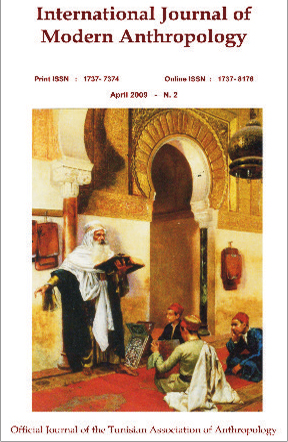
Chaabani, Hassen. 2017. “The Tunisian Revolution “The Free, Youth Revolution” from an Anthropological Perspective.” International Journal of Modern Anthropology 1(10): 14-48.
In this paper I focus on the anthropological aspects of the Tunisian Revolution of 2011 showing how anthropology could offer several angles of insight into the study of this revolution, which represents a new model of political revolutions. I show that this revolution has three major particularities: the young age of the revolutionaries, the independence of their thought and action, and their nonviolence. These particularities would not remove it from the political revolution category, but they mark a new step of paradigm change in the history of political revolutions. The behavior of the revolutionaries and their real objectives are among Muslim good morals, which are compatible with those adopted by the modern Western civilization and the Universal Moral Code. I present the dynamics of this revolution showing how it has removed immediate obstacles for reaching gradually its real objectives after the establishment of a new modern democrat constitution. In this paper, I also show how the ethnic and cultural homogeneity of Tunisian population has protected this revolution against attempts aiming to deviate it from its real objectives. As the spread of the political-religious terrorism is one of the major problems emerged after the launching of this revolution, I discuss the current causes of this spread and propose some initiatives that could be applied immediately for combating this terrorism at the cultural and intellectual levels. Moreover, I reveal its initial roots to provide a long-term strategy underlining, particularly, the need for a deep general review of all what falsely allocated to Islam and the motivation of Muslims to revitalize the real essence of.
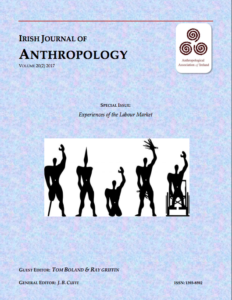
Hourigan, Niamh. 2017. “INTERNALIZED FLEXIBILITY AND RELATIVE DEPRIVATION: SUBJECTIVE RESPONSES TO ADULT TRANSITIONS IN THE REPUBLIC OF IRELAND.” Irish Journal of Anthropology 20(2): 26-38.
This article presents the preliminary findings of a study which explores attitudes to striving amongst thirty-six young middle class adults aged between 22 and 32 in the Republic of Ireland. It draws heavily on a similar study conducted by Bradley and Devadason (2008) which found that young people negotiating complex adult transitions in the UK responded with internalized flexibility (optimism, adaptability, and resourcefulness). Striving in all contexts is based on a set of contingent expectations that if the individual tries hard to achieve certain goals, specific or general results will follow. However, the collapse of the banking system, subsequent economic recession and housing crisis in the Republic of Ireland since 2008 have dramatically altered the contingent expectations on which striving of young adults within Irish society has been based since the 1990s. This study asks if those negotiating adult transitions have responded with internalized flexibility in this transformed economic context. It also examines whether the significant inter-generational disparities in the rewards delivered by striving which have emerged since 2008 (Chailloux Klein and Wilson 2016) have led to increased levels of relative deprivation (Gurr 1970, Bernburg et al 2009).

Fukagawa, Hiroki. 2017. “身体に内在する社会性と 「人格の拡大」 ニューギニア高地エンガ州サカ谷における血縁者の死の重み(Immanent Sociality within the Body and the ‘Magnification of the Person’).” Japanese Journal of Cultural Anthropology 81(1): 5-25.
When residents of Enga Province in the Highlands of Papua New Guinea (PNG) experience frustration, anger, or sorrow due to conflicts with relatives, such as clan members, they can become ill and even die. The feeling underpinning that phenomenon is referred to as “heaviness” (kenda) in the Enga language. According to that line of thinking, a deterioration in the relationship between relatives leads to a decline in the physical well-being of the persons involved. Indeed, social relationships, bodies, and emotions are inextricably intertwined through the concept of heaviness. In this paper, I consider cases of heaviness from the viewpoint of the theory of personhood and body. As the theory of personhood is broad, I focus on the specific question of how we can grasp a form of sociality and concept of person that are so radically different from our own in terms of its treatment of bodies and emotions.
As Marylyn Strathern argued, in the New Guinea Highlands, person and body are not disconnected from the social process; instead, they are the sites in which social interactions take place and their effects are registered. That social process is called an “enchainment” of (mediated or unmediated) gift-exchange relationships. Bodily changes, such as birth, growth, sickness, and death, are caused by gift exchanges, and those, in turn, cause of further exchange relations, similar to the kula valuables circulating in the islands of the Massim area. In that process, the body objectifies the exchange relationships and its capacity, and it therefore becomes a worthy cause of the actions of another. In that sense, value is not placed on the body itself but rather on social relationships. Like the products embodying the relations of production and the kula valuables bearing the history of past exchanges, bodies objectify the relations that produced the bodies themselves (e.g., conjugal relations, filiation, and junior/senior ritual relations). In that way, sociality is immanent within the body.
Strathern’s argument is extremely effective in overcoming the frameworks of previous studies in which individuals were opposed to society, and one can ask how asocial individuals become particular social beings in specific ways. However, the theory of enchainment is also problematic. In the process of enchainment, every act and its effect are only part of the internal mechanism through which the body and exchange relations are continually reproduced. According to the logic of gift exchange, enchainment is systematic, and the world is filled with internal relationships. However, following Corsín Jiménez’s argument, I doubt that the social life of the New Guinea Highlands is as logical as Strathern’s position implies. Are birth, growth, sickness, and death always understood as being equally important parts of life? A theory that treats all bodily changes as equal overlooks differences in the degree of importance associated with different persons and contexts. For example, the dying words of a relative are not equal to everyday conversation with family. The dying words include intense feelings in the face of a person’s confrontation with death. We cannot ignore the importance of that kind of event in the life of a person.
In contrast to Strathern, I focus not on the production but also on the non-production of relationships and intense emotions that can lead to a decline in the physical well-being of the person. In the cases I describe, sickness and death elicit emotions that are sustained for a very long time. Through those emotions, the exchange relationship is transformed into relations of proportion and magnification. I argue that what is important in that process is not the production of relations, but rather the transformation of the person at the limits of relationship. In this paper, I describe the interrelationship between Strathern’s theory of immanent sociality within the body and intense emotion that can destroy residents of the Enga Province.
According to the concept of person in Enga, all living things have mona (heart). Mona is a source of vitality, and the changes in its state influence the body. Because thoughts and feelings are considered to be a reflection of a person’s mona, sorrow and anger reduce physical well-being, and joy and happiness give the body vitality. That is an everyday concern for people, because one’s thoughts and emotions can harm not only oneself but also a person with whom he or she shares “one blood.” When a person feels anger because of the inappropriate conduct of a relative, that emotion directly affects the relative. It is believed that the anger of a person who is about to die is the most powerful, as it means he or she can sacrifice his or her life to have a fatal impact on the relative.
Those case studies show how the relations of scale (size) and proportion (weight) discussed by Corsín Jiménez emerge from social processes. We cannot grasp that concept if we focus only on the production of exchange relationships. Of course, in exchange relations, the ability of the person is measured in terms of quantifiable products and valuables. In contrast, I argue that scale (size) and proportion (weight) are not simple measurements but represent the transformation of the ability of the person that is, the “magnification of the person.”
ニューギニア高地エンガ州サカ谷では、血縁者間の争いや軋轢において当事者が自らの内に鬱積した怒りや悲しみを抱くと、その感情が特異な影響力をもって自他の身体に病や死をもたらす。この感情はエンガ語で「重み(kenda)」と呼ばれる。この論理に基づけば、血縁者間の関係の悪化は、当事者の身体能力の減退へと結果する。本論ではこの「重み」の事例を、ストラザーンの研究に代表される人格論の観点から考察する。 先行研究では、ニューギニア高地の人格と身体はある特殊な社会的プロセス、すなわち交換関係の連鎖が展開する場として捉えられる点が指摘されてきた。身体は、交換関係の連鎖的な展開の外部に位置するのではなく、その内部にあり、過去の贈与交換によって構成されながら、未来の贈与の動因となる。妊娠、出産、成長、死と変転する身体は、島々を循環するクラ財や名声と等しく、人格の行為の産物であり、かつ動因である。こうした議論は、非社会的な身体を措定し、それを社会的なものを表現する手段とする従来の枠組みを乗り越える上では有効なものであった。 しかし、先行研究の記述枠組みでは、あらゆる行為が等しく交換関係と身体の生産へと向けられ、広義の生産性をもつ限り、すべての行為と関係、そして身体が等質に描かれる。誕生も、成長も、病も、死もすべて交換関係と身体の産出の一契機とみなす立場からは、本論で取り上げるような、文字通り我が身を滅ぼすほどに激しい感情は視界から消え失せてしまう。本論では、先行研究とは対照的に、むしろ関係の非生産、身体能力の徹底的な減退へと向かう、ある種の強烈な感情に焦点を当てる。そこから明らかになるのは、先行研究では光を当てることのできなかった受動性の極致における人格の変容である。

Goodman, Alan. 2017. “Reflections on ‘race’ in science and society in the United States.” Journal of Anthropological Sciences 95: 283-290.
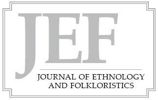
Hiiemäe, Reet. 2017. “Destiny, Miracle Healers and Magical Intervention: Vernacular Beliefs on Involuntary Childlessness in Estonia.” Journal of Ethnology and Folkloristics 11 (2): 25–50.
The article focuses on the dynamics of contemporary beliefs related to involuntary childlessness. Firstly, the methodological issues of collecting source material on delicate matters and the advantages of anonymous and narrative presentation modes in certain contexts will be discussed. Secondly, conclusions drawn from the collected material, i.e. the temporary and changeable nature of those beliefs, their relations with the mass media, the social and the individual aspects and the motifs of guilt and supernatural punishment in the context of identity issues will be presented, concluding that such belief-based models of explanation and help-seeking eventually function as a mental self-defence mechanism.

Kaur, Gurinder. 2017. “Normal and Ordinary in an Illness Experience: An Anthropological Study.” Journal of Indian Anthropological Society 52: 141-152.
The paper is based on a fieldwork conducted in a village located in the Sirmaur district, Himachal Pradesh. The paper primarily deals with how health and illness are understood and categorised in the cultural context, the contexts in which the terminologies of illnesses are defined and the factors that influence the choices for treatment. The major theorisation of the paper focuses on how illness experiences become normalised and get embedded in the ordinary everyday life of the people, at the same time finer details reveal contingencies of time, economy and survival for those who rely on the labouring body. The uncertainty created by these contingent events does not give leeway to extend the control over body for recuperation well into the future but rather the retained focus is on immediate relief. The study was conducted with an ethnographic approach and the data were collected through in-depth interviews and case study.
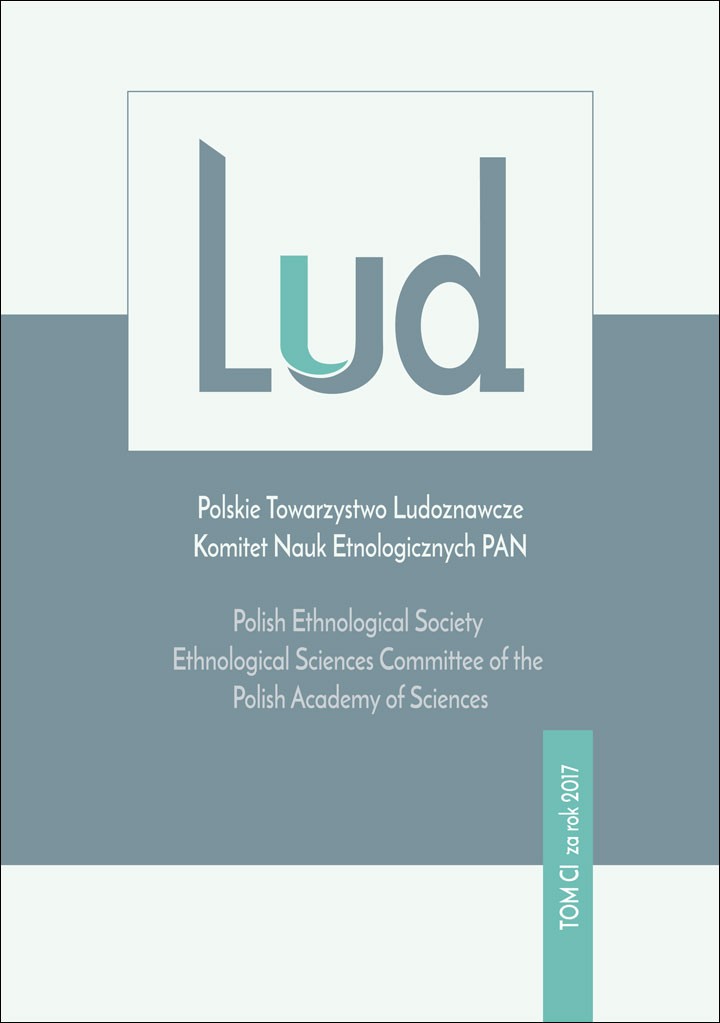
Lubaś, Marcin and Katarzyna Słaby. 2017. “Narracje nadziei, ambiwalencje doświadczenia. Opowieści o życiu w czasie remisji raka piersi w jednym z polsk ich stowarzyszeń samopomocowych (Narrations of Hope, Ambivalent of Experiences. Stories About Life in Breast Cancer Remission in One of Polish Self-Help Associations).” Lud 101: 401-421.
This paper scrutinizes fifteen life stories told by volunteer activists from a breast cancer support group operating in southern Poland; highlighted is life in remission. The analysis is based on ethnographic materials (i.e., in-depth interviews, participant observation) gathered during fieldwork conducted by one of the authors. We especially focus on variation and ambiguity in these remission narratives. Drawing on Arthur Frank’s typology of illness narratives, we distinguish two strains: the “restitution” and the “quest” narratives (which are combined by our interlocutors). The former is a construct which presumes that cancer is a transitory physical condition which can be successfully cured, taking post-treatment patients back to the initial state of health. This type of narrative constitutes a modus operandi for the support group whose essential task is to instill hope in women suffering from breast cancer. The latter narrative type seems more complex and more sensitive to the particularities and precariousness of the embodied biography. It underscores a quest for establishing meaningful relationships in a life affected by multiple defeats. Considering the remission narratives analyzed herein, the authors of this paper conclude that the system and apparatus of biomedicine do influence, but do not wholly determine the ways in which the breast cancer experience is narrativized. The restitution narratives dominate in various realms of group life while the space for quest narratives is secluded. Nonetheless, the quest narratives embody the women’s agency. They break with dominant restitution narratives as they address painful issues of health and gender, identity loss, cancer recurrence, sense of loneliness – the topics that are excluded from the restitution narratives. These quest narratives are ambiguous in their meaning and relegated only to private conversations and interviews. This text aims at contributing to a discussion about the shifts in the social and political organization and experience of remission life as a result of new technological developments and their global expansion in the last decades. Inasmuch as cancer experiences were relegated to the private sphere of patients in remission, today biosocial communities emerge in which these experiences are narrativized. Such autobiographies are characterized by ambiguity and an embodied diversity of narrative constructions. The quest narratives of post-mastectomy women discloses agency although they are not intended to bring radical change in the way cancer experience and remission life is publicly narrativized.
Artykuł zawiera analizę opowieści Amazonek-Ochotniczek – działających w jednym z polskich stowarzyszeń samopomocowych – na temat życia w czasie remisji choroby nowotworowej piersi. Podstawą rozważań są świadectwa etnograficzne w postaci obserwacji uczestniczącej i wywiadów narracyjnych prowadzonych podczas badań terenowych we wspomnianej grupie samopomocowej. Przedmiotem uwagi czynimy wariantywność opowieści rozmówczyń, a także hierarchizacje praktyk narracyjnych. W oparciu o typologię Arthura Franka wyróżniamy dwa typy konstrukcji narracyjnych w opowieściach kobiet: narracje restytucji zdrowia oraz narracje poszukiwania. Pierwszy typ narracji, ujmujący chorobę i jej skutki jako stan przejściowy prowadzący do wyzdrowienia, stanowi modus operandi stowarzyszenia. Służy on przede wszystkim niesieniu nadziei i wsparcia osobom aktualnie chorującym. Narracje poszukiwania zdają sprawę z tego, co pomija narracja restytucji zdrowia, czyli przypadków wznowy raka, utraty poczucia kobiecości, a także osamotnienia, jakiego doświadczają osoby po mastektomii piersi. Analizowany przez nas przypadek zróżnicowania narracji i praktyk narracyjnych w stowarzyszeniu samopomocowym rzuca światło na konsekwencje procesów biomedykalizacji chorób. Biorąc pod uwagę analizowane świadectwa można stwierdzić, że systemy i aparaty biomedyczne współkształtują, ale nie determinują w całości sposobów narratywizowania doświadczenia remisji raka piersi. Narracje restytucji zdrowia dominują w wielu kontekstach działalności stowarzyszenia, narracje poszukiwania ujawniają się w prywatnych rozmowach i wywiadach biograficznych – widać w nich sprawstwo kobiet. Przełamują schemat narracji restytucji zdrowia, będący wyrazem biomedycznego sposobu myślenia o chorobie i życiu w czasie remisji choroby. Wymowa opowieści poszukiwania pozostaje ambiwalentna. Poczucie dumy z pokonania choroby i znalezienia trwałych znaczących relacji z innymi miesza się w nich z doświadczeniem wznowy, poczuciem utraty kobiecości, osamotnieniem. Artykuł jest przyczynkiem do dyskusji o przemianach społecznej i politycznej organizacji doświadczenia życia z remisją choroby nowotworowej w efekcie biomedykalizacji. Analiza pokazuje pewien przypadek zróżnicowania konstrukcji narracyjnych i praktyk narratywizowania. Narracje restytucji zdrowia dominują w publicznych wystąpieniach kobiet, narracje poszukiwania spycha się do sfery prywatnej i nieformalnych wypowiedzi. Są one wyrazem sprawstwa osób po mastektomii, chociaż nie stanowią zarzewia buntu wobec dominujących publicznie sposobów narratywizowania doświadczenia raka piersi i życia w czasie remisji tej choroby.
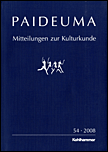
Goddard, Michael. 2017. “THE TOWN IN THE VILLAGE AND THE VILLAGE IN THE TOWN: An examination of a discursive dichotomy in Melanesia.” Paideuma 63:113–136.
The paper is based on a fieldwork conducted in a village located in the Sirmaur district, Himachal Pradesh. The paper primarily deals with how health and illness are understood and categorised in the cultural context, the contexts in which the terminologies of illnesses are defined and the factors that influence the choices for treatment. The major theorisation of the paper focuses on how illness experiences become normalised and get embedded in the ordinary everyday life of the people, at the same time finer details reveal contingencies of time, economy and survival for those who rely on the labouring body. The uncertainty created by these contingent events does not give leeway to extend the control over body for recuperation well into the future but rather the retained focus is on immediate relief. The study was conducted with an ethnographic approach and the data were collected through in-depth interviews and case study.
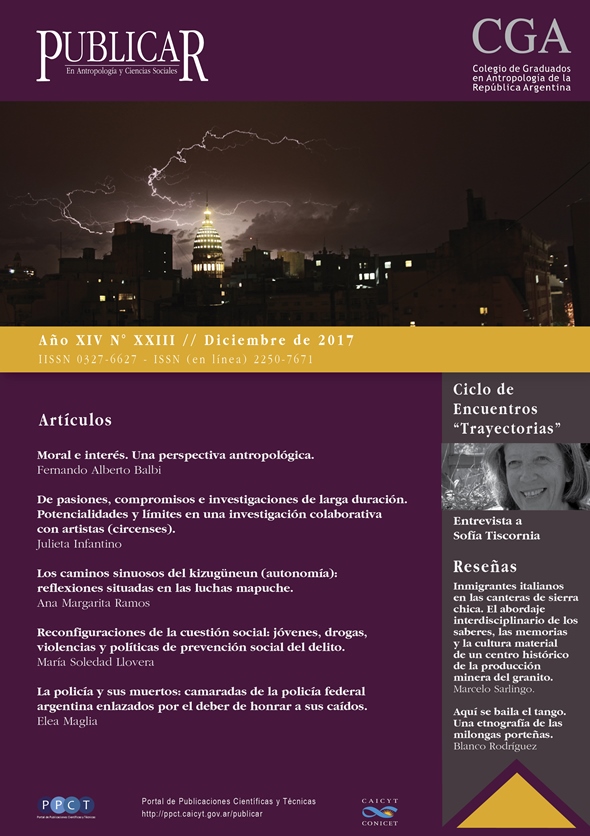
Ramos, Ana Margarita. 2017. “Los caminos sinuosos del kizugüneun (autonomía): reflexiones situadas en las luchas mapuche (The Sinuous Roads of the kizugüneun (autonomy): Some Thinking about the Mapuche Struggles).” Publicar en Antropología y Ciencias Sociales 23: 53-72.
The interactions between social movements and State vary depending on socio-political and historical contexts, making up heterogeneous relational spaces of convergence and disputes between people, organizations, networks and institutions. Without disregarding that relational dynamic -long worked in Argentina by other colleagues- I am interested in thinking the notion of autonomy from the point of view of mapuche militancy (argentinian Patagonia) which understands the struggle of its people as a historic confrontation with the State governmentality. Considering autonomy as a critical attitude and expression of the art of not being governed, I explore the constitutive tensions that emerge whenever a political practice is made concrete and is then projected as a new step towards the kizugüneun (action to decide for oneself). I am specifically referring to tensions between State control, illegitimate practices from the State view and the State recognition. In order to push among these three relationships - in a movement for which autonomy is not a present quality but a long-term goal- I describe two ethnographic situations in which some sectors of the mapuche movement in the mountainous area of Río Negro and Chubut triggered as People to extend their autonomy.
Las interacciones entre movimiento social y Estado varían según los contextos sociopolíticos e históricos, constituyendo espacios relacionales heterogéneos de convergencias y disputas entre personas, organizaciones, redes sociales e instituciones. Sin desconocer esa dinámica relacional -largamente trabajada en Argentina por otros colegas-, me interesa pensar la noción de autonomía desde las reflexiones de una militancia mapuche (Patagonia argentina) que entiende la lucha de su pueblo como un enfrentamiento histórico con la gubernamentalidad estatal. Considerando la autonomía como actitud crítica y expresión del arte de no ser gobernados, exploro las tensiones constitutivas que emergen cada vez que una práctica política se concreta y se proyecta como un nuevo peldaño hacia el kizugüneun (acción de decidir por uno mismo). Específicamente refiero a las tensiones entre el control del Estado, la ilegitimidad ante el Estado y el reconocimiento estatal. Con el fin de poner en tensión estas tres relaciones -en un movimiento para el cual la autonomía no es tanto una cualidad presente como una meta a largo plazo-, describo dos situaciones etnográficas en las que algunos sectores del movimiento mapuche de la zona cordillerana de Río Negro y Chubut accionaron como pueblo para ampliar su autonomía.
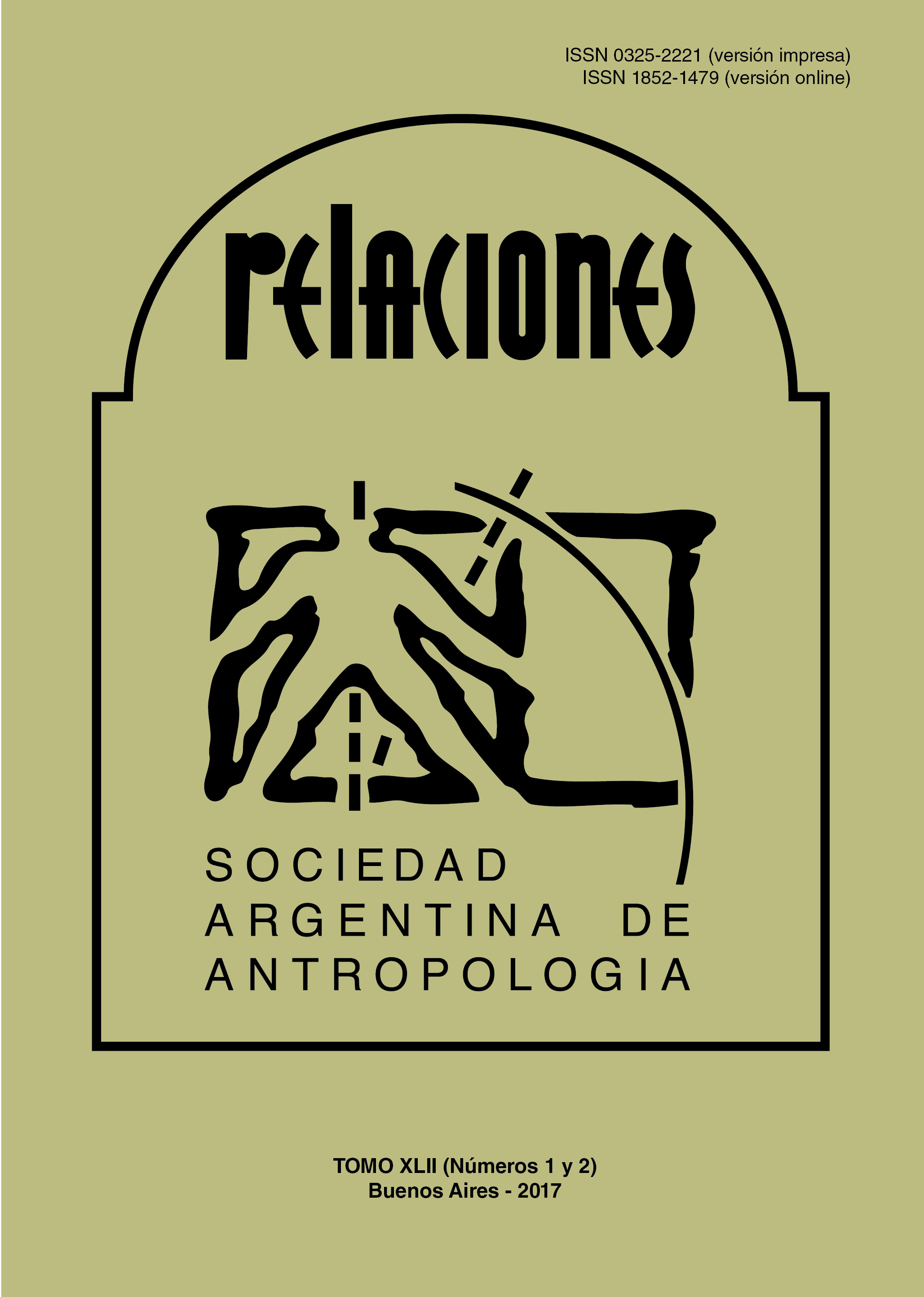
Cocilovo, José A., Héctor H. Varela, María L. Fuchs and Silvia G. Valdano. 2017. “Movilidad, tráfico Sur Andino y diferenciación genética entre San Pedro de Atacama y la Puna de Jujuy (Mobility, South Andean traffic and genetic differentiation between San Pedro de Atacama and Puna de Jujuy).” Relaciones de la Sociedad Argentina de Antropología 42(2): 207-229.
The relationships between San Pedro de Atacama (SPA, 400-1535 AD) and Puna de Jujuy (PJ, 1029-1497 AD) are evaluated for their possible influence on the genetic structure of both populations. Frequency distributions based on phenotypic traits exhibit composed of individuals of both intermediate zone subregion. The 8% of individuals of SPA were assigned in PJ with high probability (͞p=0.69), mainly from sites of the Middle and Late periods (Quitor 6, Coyo Oriental, Quitor 5, Quitor 1 and Yaye), and 32% of individuals of PJ (͞p=0.74), mainly from sites Doncellas and Agua Caliente, were assigned to the Early, Middle and Late periods of SPA. Evidence from the Fst statistic suggests the effect of mid- and wide-range migratory events influencing the balance between genetic drift and migration. The results are consistent with the relationships established by archaeology.
Se evalúan las relaciones entre San Pedro de Atacama (SPA, 400-1535 d.C.) y la Puna de Jujuy (PJ, 1029-1497 d.C.) por su posible influencia en la estructura genética de ambas poblaciones. Las distribuciones de frecuencias basadas en rasgos fenotípicos presentan una zona intermedia integrada por individuos de una y otra subregión. El 8% de los individuos de SPA fue asignado en PJ con niveles altos de probabilidad (͞p=0,69), principalmente desde sitios de los períodos Medio y Tardío (Quitor 6, Coyo Oriental, Quitor 5, Quitor 1 y Yaye), y el 32% de PJ (͞p=0,74), en su mayoría de los sitios de Doncellas y Agua Caliente, fue asignado a los períodos Temprano, Medio y Tardío de SPA. Las evidencias obtenidas a partir del estadístico Fst sugieren el efecto de eventos migratorios de rango medio y amplio influyendo en el equilibrio entre la deriva genética y la migración. Los resultados son consistentes con las relaciones establecidas por la arqueología.
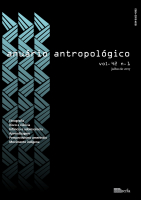
da Silva, Kelly Cristiane. 2017. “Women, gender and power among indigenous peoples of Portuguese Timor.” Revista Anuário Antropológico 42(2): 183-205.
This essay examines the social position of women and the implications of gender representations among indigenous peoples in post-World War II Portuguese Timor. It is a bibliographic critique based on works of academic anthropology and of certain missionary and colonial administrative ethnographies published between the 1950s and 1980s. I argue that in general women occupied a relatively subaltern position in the collective dynamics of social reproduction. This results from the specificity of local social structures and from the separation of sex and gender. I attempt to elucidate an apparent contradiction: on the one hand, femaleness, as a gender classifying principle, is associated with superiority among many peoples in Timor-Leste and, on the other hand, women are often in subaltern positions regarding collective reproduction. I argue that the ways the female principle and the idea of fertility are ritually handled serve the purpose of producing and reproducing male dominance in the dynamics of collective social reproduction and the co-opting of women’s power of giving life.

Escosteguy, Paula, Clara Scabuzzo and María Isabel González. 2017. “Análisis bioarqueológico de los restos de arroyo El Siasgo, (supuesto Homo caputinclinatus de Ameghino 1910).” Revista Argentina de Antropologia Biologica 19(2): 2-14.
The archaeological research developed in the Salado River Depression during the last three decades has offered knowledge about pre-Hispanic people who lived there along over the Late Holocene. As a result of fieldworks, human remains had been recovered from three archaeological sites (La Guillerma Ñandú, La Guillerma 1, and La Guillerma 5), resulting in a minimal number of six individuals, who had been buried separately. In this paper new information is presented, the first bioarchaeological study of the skeleton recovered by Carlos Ameghino in arroyo El Siasgo at the beginnings of the XX century. The aim of this work is to present the results of the bioarchaeological analysis of this skeleton, and the radiocarbon dating obtained. It thus, seeks to the review of a singular historical case in the light of a renewed theoretical and methodological framework. From the bioarchaeological analysis, it was known that the human remains belonged to a juvenile (between 12 and 15 years old); that he appeared to have been buried in primary inhumation, and that his skull showed artificial cranial deformation. The dating obtained for the remains was ca. 3500 years BP, which constituted the oldest dating for the Salado River Depression. The isotopic analysis showed a mixed diet that included the consumption -in low amounts- of sea food. Finally, the results of this research are integrated with other bioarchaeological data from the area. Evangelical missions, capitalism and state regulation among the Guarani of the Argentine Northwest.
Las investigaciones arqueológicas desarrolladas en la Depresión del río Salado durante las últimas tres décadas permitieron profundizar en el conocimiento de los grupos prehispánicos que vivieron allí durante el Holoceno tardío. Como resultado de los trabajos de campo en la microrregión, se conocen tres sitios con restos humanos (La Guillerma Ñandú, La Guillerma 1 y La Guillerma 5), totalizando un número mínimo de seis individuos inhumados de manera aislada. En esta contribución se suma, a la información precedente, el primer estudio bioarqueológico de un esqueleto recuperado por Carlos Ameghino en el arroyo El Siasgo a principios del siglo XX. El objetivo es presentar los resultados del análisis bioarqueológico de este esqueleto, así como el fechado radiocarbónico obtenido. Se busca así aportar a la revisión de un caso de singular importancia histórica a través de la aplicación de un marco teórico y metodológico renovado. Como resultado de los análisis bioarqueológicos se pudo establecer que los restos corresponden a un individuo juvenil, de entre 12 y 15 años, que habría sido inhumado en posición primaria y que presentaba el cráneo deformado de manera circular. Se obtuvo, para este esqueleto, un fechado de ca. 3500 años AP, que es el más antiguo para la depresión del río Salado. Los análisis isotópicos reflejan que la dieta del individuo fue mixta e incluyó la ingesta, en pequeñas cantidades, de alimentos marinos. Finalmente, estos resultados son integrados a la información bioarqueológica disponible para el área.

Espinosa, Mariana. 2017. “Misiones evangélicas, capitalismo y regulación estatal entre los guaraníes del Noroeste Argentino (Evangelical missions, capitalism and state regulation among the Guarani of the Argentine Northwest).” Revista del Museo de Antropologia 10(2): 193-205.
Evangelism among the Guarani of the Argentine Northwest is a subject of study scarcely explored that would be important to vitalize given its geographical scope, historical depth and contemporary socio-cultural effects. This article broadens and complements historical and ethnographic knowledge about the expansion of evangelical missions of British and North American origin among the Guarani, putting in evidence three moments of the missionary undertakings and their relationships with the State and the agro-industrial companies, between 1890 and 1980. It is mainly the search for understanding and explanation of the current map of evangelical Guarani churches that leads us to propose a long-term study on the genesis and transformations of the socio-cultural system organized by the expansion of evangelism among indigenous communities in the region. The article combines historical sources, ethnographic observations and pertinent bibliographical references.
El evangelismo entre guaraníes del Noroeste Argentino es un tema poco explorado que sería importante vitalizar dado su alcance geográfico, profundidad histórica e impacto socio-cultural contemporáneo. El presente artículo amplia y complementa conocimiento histórico y etnográfico sobre la expansión de misiones evangélicas de origen británico y norteamericano entre los guaraníes, evidenciando tres momentos de los emprendimientos misioneros y su relación con el Estado y los establecimientos agro-industriales, entre 1890 y 1980. Es principalmente la búsqueda de comprensión y explicación del actual mapa de iglesias evangélicas guaraníes lo que nos lleva a plantear un estudio de larga duración sobre la génesis y las transformaciones del sistema socio-cultural organizado por la expansión del evangelismo entre comunidades indígenas de la región. El desarrollo del artículo combina fuentes documentales, observaciones etnográficas y un sistema de referencias bibliográficas.
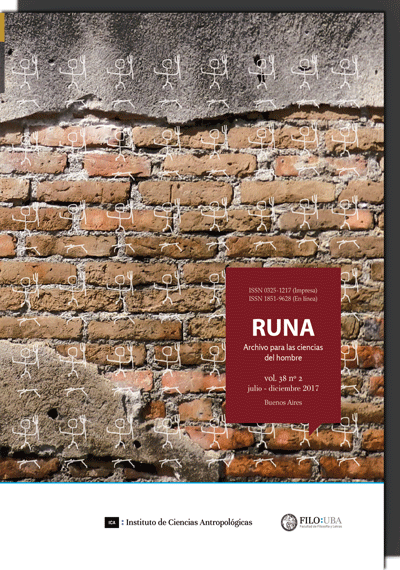
Martino, María Cecilia. 2017. “Memorias y redefinición de identidades en torno a los procesos de independencia en Cabo Verde. El caso de los argentino-caboverdianos de Buenos Aires (Memories and identities redefinitions around the independence process in Cape Verde. The case of the Argentine-Cape Verdeans from Buenos Aires).” Runa 38(2): 21-35.
The article analyzes, from an ethnographic and historical perspective, the relations between memory, identity and Afro-descendant political activism among the Argentine-Cape Verdeans from Buenos Aires. The article highlights the memories and stories of the independence of Cape Verde, and the role played in it by Amílcar Cabral, the main political leader of this process. These narratives, whose specific expression are reflected in the institutional space of the Cape Verdean Society of Dock Sud, are updated from different perspectives and redefine the changing identity borders that allow the delineation of specific forms of political activism in Buenos Aires.
El artículo analiza, desde una perspectiva etnográfica e histórica, las relaciones entre la memoria, la identidad y el activismo político frodescendiente entre los argentino-caboverdianos de Buenos Aires. Tomará como eje de análisis los recuerdos sobre la independencia de Cabo Verde y el papel jugado en ella por Amílcar Cabral, principal líder político de este proceso, en diferentes períodos. Estos relatos, cuya expresión específica se plasman en el espacio institucional de la Sociedad caboverdiana de Dock Sud, se actualizan desde diferentes perspectivas y redefinen fronteras identitarias que permiten delinear diversas formas de activismo político en Buenos Aires.

Mittermaier, Amira. 2017. “Do Dreams Give Voice to the Divine?” Sapiens

Aikman, Pounamu Jade William Emery. 2017. “TROUBLE ON THE FRONTIER: Hunt for the Wilderpeople, sovereignty, and state violence.” SITES 14(1): 56-79.
In this essay, I use Taika Waititi’s 2016 Hunt for the Wilderpeople as a lens through which to discuss the management of Indigenous life by the settler colonial state, whereby certain Indigenous subjectivities are ‘let to die’ for the overall health of the body politic. I then turn to examine how the theatrical paramilitarised performances in the film are reflected in the on-going nature of colonial violence directed towards the Ngāi Tūhoe people, exemplified in the 2007 ‘anti-terror’ raids codenamed ‘Operation 8’, and the more recent (but less well known) raids that have targeted Tūhoe since 2007. I stipulate that such raids demonstrate a return to sites of ‘originary violence’ as per Irene Watson’s thesis (2009), where Crown sovereignty is violently reinscribed upon the frontier to reinforce the supremacy of the state. This discussion continues Vijay Devadas’ argument that Operation 8 revealed a ‘racialised sovereignty’ that constitutes the ‘legitimacy and power of state sovereignty … in Aotearoa’ (2008, 124).
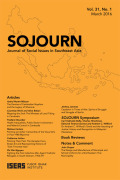
Inga Gruß. 2017. “The Emergence of the Temporary Migrant: Bureaucracies, Legality and Myanmar Migrants in Thailand.” Sojourn: Journal of Social Issues in Southeast Asia 32(1): 1-35.
The national verification process that has provided formalized guidelines to regulate the migration of Myanmar workers to Thailand permanently places migrants in a zone of temporary legality. This zone is a bureaucratic space in which legality surfaces as a flexible concept serving the interests of the Thai and Myanmar states while placing an economic burden on migrants. Legality also emerges as a commodity that does not relate to migrants' compliance with the law, but rather to their ability to mobilize resources. Brokers not only guide migrants in navigating the transnational bureaucracies, but also mediate the emotional ties between migrants and those bureaucracies. The emotional undercurrents of the process ultimately serve as a reminder that any bureaucratic space is inherently affective.
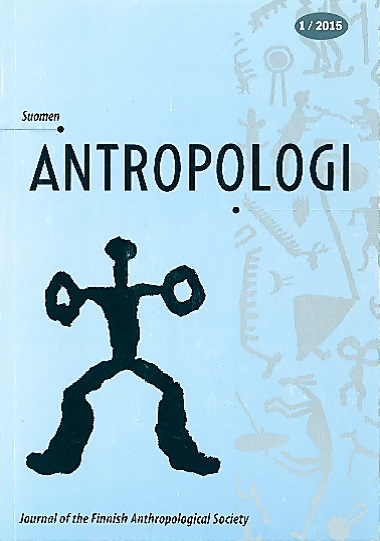
Andrews, Hazel. 2017. “Becoming Through Tourism: Imagination in practice.” Suomen Antropologi: Journal of the Finnish Anthropological Society 42(1): 31-44.
This paper re-considers the role of tourism imaginaries which have emerged as a dominant paradigm in the study of tourism in recent years. The work examines the way in which they are seen as structuring devices for the enactment of touristic practices and argues that such an approach continues to facilitate the schism which erupted between the imagination and the world of the real wrought by the Enlightenment. Based on ethnographic fieldwork involving periods of participant observation on the Mediterranean island of Mallorca, the paper demonstrates that not all of tourists’ experiences can be pre-imagined and, drawing on phenomenological and existential perspectives in anthropology, goes on to argue that understandings of touristic practices emerge in the doing and being of tourism.

Burbank, Victoria. 2017. “The embodiment of sorcery: Supernatural aggression, belief and envy in a remote Aboriginal community.” The Australian Journal of Anthropology 28(3): 286-300.
Anthropologists have long attempted to come to grips with Indigenous Australian sorcery beliefs and especially with the idea that acts with no understandable efficacy bring about illness and death. In this ethnographic interpretation of sorcery beliefs in the remote community of Numbulwar, I follow those few who have attempted to find a link between these apparently harmless acts and real physiological consequences, arguing that the fear of sorcery that pervades Numbulwar contributes directly to the stress of daily life and indirectly to the premature morbidity and mortality of too many lives. Belief is posited as the mechanism whereby the human stress response is activated to a harmful extent, a process in which the projection of envious feelings may often be critical.
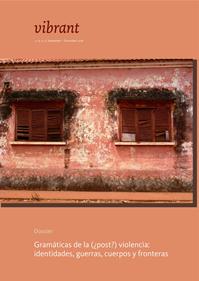
Zhouri, Andréa, Raquel Oliveira, Marcos Zucarelli and Max Vasconcelos. 2017. “The Rio Doce Mining Disaster in Brazil: between policies of reparation and the politics of affectations.” Vibrant 14(2): 81-101.
This article analyses the policies of affectations in the context of the disaster which occurred in late 2015, when an iron ore tailings dam ruptured, affecting thousands of families in the Rio Doce River Valley, in the southeast of Brazil. The paper discusses the challenges faced by victims of the disaster, given that the ‘affected person’ as a social subject goes through a dramatic process of forced sociability, forged in political processes and bureaucratic demands which are alien to her/his world. As a consequence, the claims of victims are transmuted by the rationalities and techniques of corporate management, therefore disabled and re-codified by taxonomies which define forms of damage reparations, as well as modes of reconstruction of their way of life. From an anthropological perspective, we examine the struggle between the objectification imposed by the policy of affectation and the political subjectivation of actors compulsorily brought to contentious settings over the control of their own destiny.
O artigo discute os aspectos da política das afetações e suas consequências tomando como caso etnográfico o desastre ocorrido no final de 2015, quando uma barragem de rejeitos de minério de ferro se rompeu, afetando milhares de famílias na bacia do Rio Doce, sudeste do Brasil. O propósito é examinar os desafios colocados às vítimas do desastre, visto que o sujeito social ‘atingido’ passa por um processo dramático de sociabilidade forçada, forjada nos processos políticos e nas demandas burocráticas que lhe são alheios. Desse modo, suas reivindicações são transmutadas pelas racionalidades e técnicas do gerir corporativo, tolhidas e recodificadas pelas taxonomias que definem as formas de reparação dos danos, bem como os modos de reconstrução do seu viver. Trava-se uma luta entre a objetivação imposta pela política das afetações e a subjetivação política de atores compulsoriamente trazidos aos cenários de disputa sobre o controle de seu próprio destino.

Sprenger, Guido. 2017. “Local comparisons. Buddhism and its others in upland Laos.” Zeitschrift für Ethnologie 142: 245-264.
Comparison is not only the foundation of anthropology, but may even be a human universal. It is a practice that emerges from the perception of cultural difference. Therefore, not only modern academics compare – comparison is always embedded in specific cultural relationships. This article shows how Rmeet uplanders in northern Laos and Jru’ in the south employ comparison when they talk about ethnic and religious difference. In particular, they compare their own ritual system with translocal and national Buddhism. They thus practice comparison in the sense that comparison is part of transcultural relationships and the valorization of cultural representations. This occurs in a framework of distinctions between Buddhism and its manifold “animist” others, which provides two bases of comparison – the otherness inbuilt into Buddhism and the adaptability of animism. Uplanders thus find themselves cast in the position of Buddhism’s other and construct the relationships in terms of reversible hierarchies.
